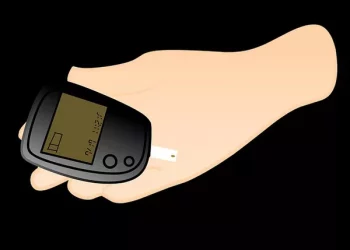Type 1 diabetes, traditionally considered a condition that primarily affects children and adolescents, can also manifest later in life, presenting unique challenges for diagnosis, management, and understanding its underlying causes. Late-onset type 1 diabetes, also known as adult-onset or latent autoimmune diabetes in adults (LADA), is characterized by autoimmune destruction of insulin-producing beta cells in the pancreas, leading to insulin deficiency and hyperglycemia. In this comprehensive article, we delve into the complex interplay of genetic, environmental, and immunological factors believed to contribute to the development of late-onset type 1 diabetes, shedding light on the mechanisms that distinguish it from other forms of diabetes.
Late-Onset Type 1 Diabetes: A Distinct Entity
Late-onset type 1 diabetes, although sharing certain similarities with type 1 diabetes diagnosed in childhood, exhibits several distinct features that set it apart from other forms of diabetes, including:
1. Age of Onset: Late-onset type 1 diabetes typically presents after the age of 30, with a peak incidence between the ages of 30 and 50. While type 1 diabetes diagnosed in childhood is often characterized by a rapid onset of symptoms and a more severe clinical course, late-onset type 1 diabetes may have a slower progression and milder initial symptoms, leading to delayed diagnosis and treatment.
2. Autoimmune Features: Like childhood-onset type 1 diabetes, late-onset type 1 diabetes is characterized by autoimmune destruction of beta cells in the pancreas mediated by T lymphocytes and autoantibodies targeting pancreatic antigens such as insulin, glutamic acid decarboxylase (GAD), islet antigen 2 (IA-2), and zinc transporter 8 (ZnT8). However, the presence of autoantibodies may be less pronounced or delayed in adults with late-onset type 1 diabetes compared to children.
3. Insulin Dependency: Individuals with late-onset type 1 diabetes typically require insulin therapy for glycemic control, as their pancreas is unable to produce sufficient insulin to meet the body’s needs. However, the degree of insulin deficiency and the response to treatment may vary depending on the extent of beta cell destruction and the presence of residual insulin secretion.
Genetic Predisposition to Late-Onset Type 1 Diabetes
Genetic factors play a significant role in the development of late-onset type 1 diabetes, with certain genetic variants increasing susceptibility to autoimmune destruction of beta cells. While the human leukocyte antigen (HLA) complex on chromosome 6 is the primary genetic determinant of type 1 diabetes risk, accounting for approximately 50% of genetic susceptibility, non-HLA genes also contribute to disease susceptibility.
1. HLA Genes: Certain HLA alleles, particularly those within the HLA class II region, are strongly associated with an increased risk of developing type 1 diabetes. In late-onset type 1 diabetes, the HLA genotype may differ from that observed in childhood-onset disease, with a lower frequency of high-risk HLA alleles such as HLA-DR3 and HLA-DR4 and a higher prevalence of protective alleles.
2. Non-HLA Genes: In addition to HLA genes, several non-HLA genes have been implicated in the pathogenesis of late-onset type 1 diabetes, including genes involved in immune regulation, antigen presentation, and beta cell function. Variants in genes such as CTLA4, PTPN22, INS, IL2RA, and CLEC16A have been associated with an increased risk of developing type 1 diabetes in adults.
3. Gene-Environment Interactions: While genetic factors contribute to susceptibility to type 1 diabetes, environmental factors play a critical role in triggering autoimmune destruction of beta cells in genetically predisposed individuals. Environmental triggers such as viral infections, dietary factors, gut microbiota, and exposure to toxins or pollutants may initiate or accelerate the autoimmune process in late-onset type 1 diabetes.
Immunological Mechanisms of Beta Cell Destruction
The pathogenesis of late-onset type 1 diabetes involves a complex interplay of immunological processes that culminate in the destruction of insulin-producing beta cells in the pancreatic islets. Although the exact mechanisms underlying beta cell autoimmunity in adults remain incompletely understood, several key processes have been implicated in the pathogenesis of late-onset type 1 diabetes.
1. T Cell-Mediated Autoimmunity: Autoreactive T lymphocytes play a central role in the autoimmune destruction of beta cells in type 1 diabetes, recognizing pancreatic antigens presented by antigen-presenting cells (APCs) in the context of HLA molecules. In late-onset type 1 diabetes, aberrant activation and expansion of autoreactive T cells may occur in response to environmental triggers or dysregulation of immune checkpoints.
2. B Cell Autoimmunity: B lymphocytes produce autoantibodies targeting pancreatic antigens such as insulin, GAD, IA-2, and ZnT8, which serve as biomarkers of beta cell autoimmunity in type 1 diabetes. In late-onset type 1 diabetes, the production of autoantibodies may be less pronounced or delayed compared to childhood-onset disease, posing challenges for diagnosis and classification.
3. Cytokine Imbalance: Dysregulation of pro-inflammatory and anti-inflammatory cytokines may contribute to the pathogenesis of late-onset type 1 diabetes, creating a pro-inflammatory microenvironment that promotes beta cell destruction and impairs immune tolerance. Imbalances in cytokine production may result from genetic predisposition, environmental triggers, or dysregulation of immune checkpoints.
Environmental Triggers and Risk Factors
While genetic susceptibility plays a significant role in the development of late-onset type 1 diabetes, environmental factors also contribute to disease pathogenesis by triggering or modulating autoimmune responses against beta cells. Several environmental triggers and risk factors have been implicated in the onset of late-onset type 1 diabetes, including:
1. Viral Infections: Viral infections, particularly those affecting the pancreas or triggering immune activation, have been implicated as potential triggers of late-onset type 1 diabetes. Viruses such as enteroviruses, coxsackievirus, mumps virus, and cytomegalovirus have been associated with an increased risk of developing type 1 diabetes in susceptible individuals.
2. Dietary Factors: Dietary factors, including early exposure to cow’s milk proteins, gluten, and certain dietary components, have been proposed as potential environmental triggers of type 1 diabetes. High consumption of cow’s milk during infancy or early childhood has been associated with an increased risk of developing type 1 diabetes, possibly due to molecular mimicry or immune dysregulation.
3. Gut Microbiota: Emerging evidence suggests that alterations in the composition and diversity of the gut microbiota may influence immune responses and susceptibility to autoimmune diseases such as type 1 diabetes. Dysbiosis, or imbalance in gut microbial communities, has been observed in individuals with type 1 diabetes, raising the possibility of a link between gut microbiota and disease pathogenesis.
4. Exposure to Toxins and Pollutants: Environmental toxins and pollutants, including heavy metals, pesticides, and air pollutants, have been implicated as potential risk factors for type 1 diabetes. Exposure to toxins and pollutants may trigger or exacerbate autoimmune responses, disrupt immune tolerance, and contribute to beta cell dysfunction and destruction in susceptible individuals.
Clinical Manifestations and Diagnosis of Late-Onset Type 1 Diabetes
Late-onset type 1 diabetes presents a diagnostic challenge due to its insidious onset, variable clinical course, and overlap with other forms of diabetes, including type 2 diabetes and LADA. The clinical manifestations of late-onset type 1 diabetes may include:
1. Gradual Onset of Symptoms: Unlike childhood-onset type 1 diabetes, which often presents with a rapid onset of symptoms such as polyuria, polydipsia, weight loss, and fatigue, late-onset type 1 diabetes may have a more insidious onset, with symptoms developing gradually over months or years.
2. Atypical Clinical Features: Late-onset type 1 diabetes may present with atypical clinical features that overlap with other forms of diabetes, making diagnosis challenging. Individuals may have a milder clinical course, preserved beta cell function, or mixed features of type 1 and type 2 diabetes, complicating classification and treatment decisions.
3. Autoantibody Status: The presence of autoantibodies targeting pancreatic antigens such as GAD, IA-2, and ZnT8 is a hallmark of autoimmune diabetes, including late-onset type 1 diabetes. However, autoantibody positivity may be less common or delayed in adults with late-onset type 1 diabetes compared to children, posing challenges for diagnosis and classification.
4. Response to Treatment: Individuals with late-onset type 1 diabetes typically require insulin therapy for glycemic control, as their pancreas is unable to produce sufficient insulin to meet the body’s needs. However, the degree of insulin deficiency and the response to treatment may vary depending on the extent of beta cell destruction and the presence of residual insulin secretion.
Conclusion: Unraveling the Complexities of Late-Onset Type 1 Diabetes
Late-onset type 1 diabetes represents a distinct entity within the spectrum of autoimmune diabetes, characterized by autoimmune destruction of beta cells in the pancreas, insulin deficiency, and hyperglycemia. While genetic factors play a significant role in disease susceptibility, environmental triggers and immunological mechanisms also contribute to disease pathogenesis, creating a complex interplay of factors that shape the onset and progression of late-onset type 1 diabetes.
Understanding the causes and mechanisms underlying late-onset type 1 diabetes is essential for improving diagnosis, classification, and management of this challenging condition. By elucidating the genetic, environmental, and immunological factors that contribute to late-onset type 1 diabetes, researchers and clinicians can develop targeted approaches for early detection, intervention, and personalized treatment, ultimately improving outcomes and quality of life for individuals living with this chronic autoimmune disease.



























